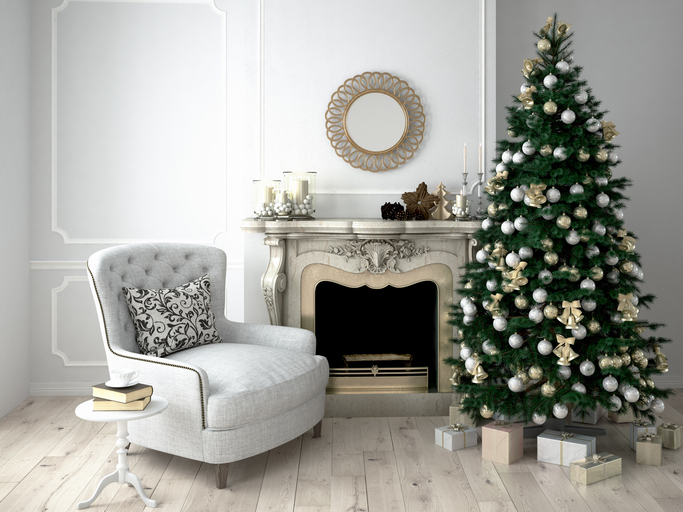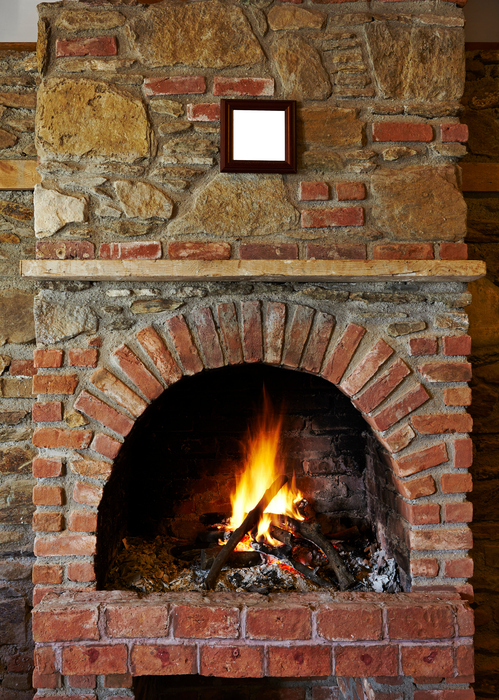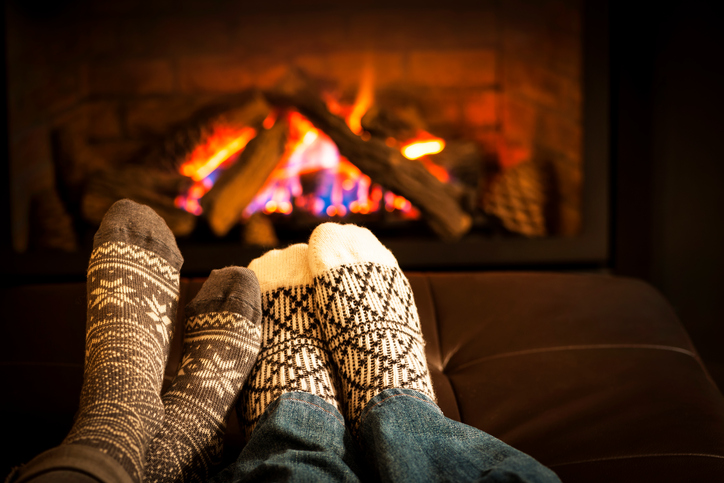Are you doing an HVAC project?
Modernize can pair you with three to four pros in your area, so you can compare options and save time and money.
How to Increase the Energy Efficiency of Your Fireplace
Fireplaces generate a lot of heat — when you’re standing right in front of them. Unfortunately, when the fire is out, they can suck warm air from the room and send it up the chimney, which wastes energy and leaves the room feeling cold. But with the right improvements, you can make your fireplace work more efficiently, saving energy and making your home more comfortable.

Improve Energy Efficiency of a Fireplace When Unlit
Chimneys are basically conduits of air up and out of a room. When a fire isn’t burning, warm air can still swoop up the chimney, wasting any of the energy used to heat that air in the first place.
Keep the Damper Closed: The damper is a metal plate above the fire grate that should fit snugly against the chimney. When closed, it prevents warm air from escaping and cold air from entering. Over time, dampers can warp, so it’s important to check if it seals properly. If not, you can replace it or install a chimney cap damper. A chimney cap damper seals the entire top of the chimney, which further reduces heat loss.
Install Fireplace Doors: Installing doors on your fireplace will help retain heat, especially when they’re sealed tightly around the edges. Fireplace doors also contain any sparks or embers while still allowing some heat to pass through. Make sure both the doors and damper are fully closed when the fireplace isn’t in use.
Close Other Doors: In homes with multiple floors, it can be useful to close doors to upstairs or downstairs rooms while using the fireplace. This helps keep heated air in the rooms you’re using, rather than letting it escape through open doors.
Have Your Chimney Cleaned Annually: A clean chimney burns more efficiently and helps prevent dangerous creosote buildup, which causes nearly 7% of home fires. Annual chimney cleaning by a certified chimney sweep ensures that your fireplace operates safely and effectively, saving energy and reducing the risk of fire.

Find the Right Contractor for Your HVAC Project
Whether you’re ready to begin your project now or need some expert advice, our network of contractors are here to help. With a few simple questions, we’ll find the best local professionals for you
Energy Efficiency of a Fireplace When Lit
Turn Down the Furnace: Since the fireplace draws air from the room, there’s no need to run the furnace at full blast. Lower the thermostat or turn off the furnace while the fire is burning to reduce energy consumption.
Add a Fireplace Insert: Installing an insert is one of the best ways to increase the efficiency of your fireplace. Inserts capture more heat and radiate it into the room, preventing it from escaping through the chimney. The EPA recommends using an insert with a stainless steel liner that extends to the top of the chimney for safety. Fireplace inserts can increase heat efficiency by up to five times compared to an open fireplace.
Burn Dry Wood: To get the most heat out of your fireplace, burn dry, seasoned wood. Wet wood produces less heat and more smoke, and it can cause the buildup of creosote in the chimney. Hardwood varieties like oak, hickory, and maple burn more efficiently than softwoods. Always avoid burning trash, plastic, or treated wood, as these can release harmful chemicals.
Replace the Raised Grate With an Andiron Grate: A raised grate helps improve combustion efficiency by allowing more air to circulate around the wood. The more air the fire receives, the more efficiently the wood will burn, leading to better heat output.
Choose the Right Fireplace: If you’re in the market for a new fireplace, look for one that includes heat circulation ducts. These ducts draw in air from the room, circulate it around the firebox, and then send the warm air back into the room. Built-in fans can help increase the airflow and improve heat distribution, making your fireplace more efficient. Also, choose a fireplace that’s certified by the EPA as a clean-burning, energy-efficient appliance.

Final Tips for Energy Efficiency in Fireplaces
- Fix Leaks Quickly: Leaks in the fireplace or chimney can drastically reduce energy efficiency. Water in the insulation material can reduce its effectiveness, so if you notice any leaks, have them fixed immediately.
- Secure the Cover: A loose or broken cover will result in heat loss and increase energy costs. Ensure your fireplace cover is secure and functioning properly to keep the warmth in.
- Regular Maintenance: Keep your fireplace in good condition with regular maintenance. Check the chimney for cracks, replace broken components, and ensure the damper and doors seal tightly. A properly maintained fireplace will not only be safer but also more energy-efficient.
Making your fireplace more energy-efficient is an investment in both comfort and savings. By sealing leaks, installing proper doors, choosing the right wood, and adding inserts or circulation fans, you can reduce your energy costs while still enjoying the warmth and ambiance a fireplace provides. If you’re considering a new fireplace, look for models with high efficiency ratings and built-in features that help circulate heat.
Find the Right Contractor for Your HVAC Project
Whether you’re ready to begin your project now or need some expert advice, our network of contractors are here to help. With a few simple questions, we’ll find the best local professionals for you
Reviews from Real Homeowners
Welcome to Homeowner Resources! We are the Modernize blog. Modernize pairs more than 3 million homeowners a year with pre-vetted contractors in their area. This blog started because we believe homeowners should know everything about their homes, from how their HVAC works to which front door colors they might love. On Homeowner Resources, you can find information on every part of your home, right down to how you can negotiate with contractors to get the best price. Here's more about the blog.
Need a contractor? Learn more about how Modernize finds the right pro for you.

